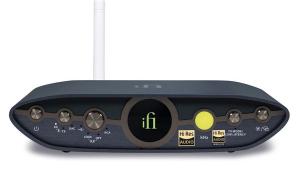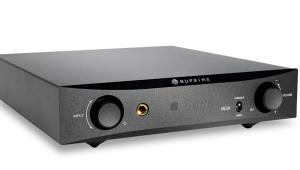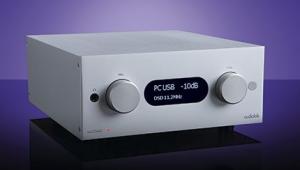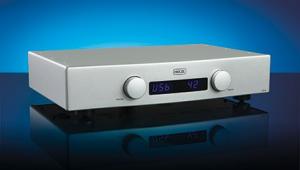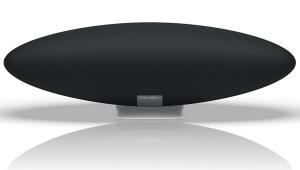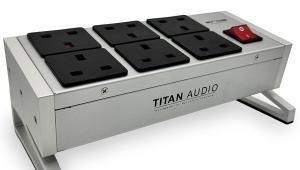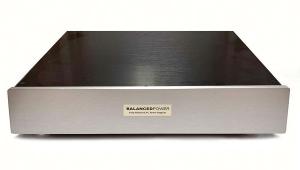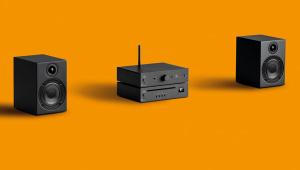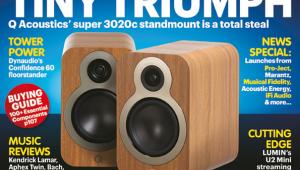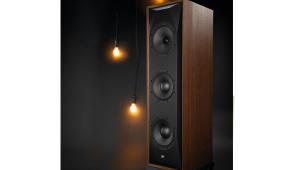Chord Electronics Hugo 2 DAC headphone amplifier
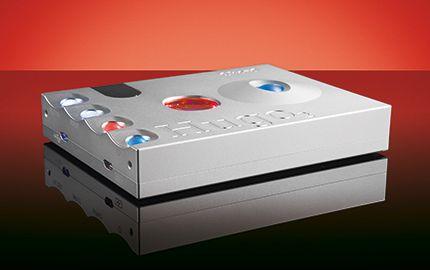
 When Chord’s first Hugo portable DAC/headphone amplifier was launched at CES in January 2014, I instantly knew it was special – it looked, sounded and worked like nothing else, and was so good that many bought it to use as their main domestic digital converter, rather than a mere travelling accessory. That’s not to say it was perfect. Enthusiastic early adopters soon got to know its foibles, but it sounded so superb that we learned to live with them.
When Chord’s first Hugo portable DAC/headphone amplifier was launched at CES in January 2014, I instantly knew it was special – it looked, sounded and worked like nothing else, and was so good that many bought it to use as their main domestic digital converter, rather than a mere travelling accessory. That’s not to say it was perfect. Enthusiastic early adopters soon got to know its foibles, but it sounded so superb that we learned to live with them.
Much as I loved it, the original Hugo had some niggles. The socketry was my main criticism; it was less rugged than was ideal, and I found Bluetooth connectivity a bit flaky. Also, it was incredibly fiddly to use, with all the pressing of tiny buttons needed; user-friendly it was not. The new Hugo 2 is substantially more expensive at £1,800, but is far better made, easier to work and a much more satisfying ownership proposition.
The first thing that strikes you is its casework; it’s now far more modern looking. The angular styling appears more purposeful and the aircraft-grade aluminium case feels more robust too. It sports four spherical control buttons, handling power, source, filtering and crossfeed functions. The original Hugo’s trademark top-mounted colour-coded volume-control sphere has been retained and made larger for easier operation. Importantly, Hugo 2 sits on a shelf more securely and is easier to use – something further aided by the addition of a remote control.
Were the changes to stop there, we would have done pretty well – with most of the original’s niggles sorted. Hugo 2 is more than just a prettier face, however, it’s a whole new product inside with a real evolution of Chord’s digital conversion and filtering platform. It’s been heavily reworked by its creator Rob Watts with a 49,152 tap-length filter, near double that of the original (see Q&A). To achieve this, it sports a much larger, Field Programmable Gate Array (FPGA) and advanced Watts Transient Aligned (WTA) filters. The key point here is that the Hugo – like all others in the Chord range – does not use bought-in, off-the-shelf converter or filtering chips.
The tweaks don’t stop there. I always thought the output stage was a key limiting factor, and the new model gets digital DC servos to replace the inline capacitors. There is now a slight switch on delay as a consequence, but it’s not a bother. A seven-hour battery life is claimed and the charging system is now via micro USB – which is a great idea. It means it’s far easier to find a power source for your Hugo while on the move. It has two charging modes – fast (1.8 amperes) and trickle (less than one ampere) – and battery charge status indication.
The original was rather fiddly to use, whereas the Hugo 2 has far better links to the outside world. The socketry for the optical, coaxial and USB digital inputs appears more rugged, and is labelled with laser-ablated function-lettering. Sadly, there’s no full-size RCA phono coaxial digital input; this is achieved by a 3.5mm socket. Via USB, Hugo 2 runs at up to a dizzying 768kHz in PCM mode and up to DSD512 (Octa DSD). Its analogue outputs comprise RCA stereo phono sockets, and 3.5mm and 6.35mm headphone outputs. Headphone users will like the Crossfeed function – retained from the oldie – which has three modes of operation via one of the illuminated control spheres. It gives a 400 millisecond-delayed and shaped signal from each left and right output to the opposite channel, which gives more of a speaker-like listening experience.
Sound quality
Most digital-to-analogue converters – with a few notable exceptions from companies such as dCS – use bought-in DAC chips from the likes of Wolfson, ESS, Burr-Brown, etc. – and as a result have a distinct family sound. Chord by contrast uses its own inhouse design, and as soon as you set ears on it, you can hear the difference. What struck me about the original Hugo – and indeed other Chord DACs since the DAC64 – is the timing. There’s something really special about the way they play music – which just ebbs and flows along in an organic and uncontrived way. That’s precisely what you get here, except it’s even better.
Nu Era’s Oscar Styles is not an audiophile recording by any stretch of the imagination, but the Hugo 2 scythes through the mushy, grey mix to deliver a wonderfully satisfying sound. It works brilliantly on two levels; it has a superb sense of musical flow and excellent tonality. Via USB from a MacBook Pro on its internal battery, running Audirvana Plus, it sounds fantastically bouncy. At the same time, the sound of the classic Oxford Synthesiser Company OSCar keyboard seems so tangible that you can almost reach out and touch it. The Hugo 2 brings superb texture to instruments and indeed human voices. The result is that the music bristles with things to enjoy – boppy rhythms set behind layers and layers of quite superbly textured sound.
Move to a better recording with acoustic, rather than electronic, instruments and vocals – such as Crosby Stills and Nash’s Wooden Ships at 24/96 – and the Hugo 2 really starts cooking on gas. It’s soon apparent that this DAC has massive detail, thanks to its ability to carry every different strand of the mix in total isolation from the others. You start hearing things in a way that normally only comes from high-quality vinyl; a top turntable running a serious moving-coil cartridge. Vocals sound so direct and personal, yet are creamily smooth; guitars have a wonderful grit to them, yet you can hear the noise of the valve amplifiers used in the studio; drums have a beautifully loose but natural sound with glistening cymbals. This DAC ticks all the hi-fi boxes – it is superb in this respect – yet the magic trick is that the listener doesn’t hone in on just this aspect of its sound. Rather you find yourself immersed in the musical event.
Chic’s Happy Man is a case in point; at first I am struck by the clarity of the sound and the wonderful way all the strands of the mix play independently of one another. I am impressed by the warm tonal patina of the recording – it’s a classic late seventies disco track after all, complete with authentic studio drum sound and close miking. Yet when Nile Rodgers’ lead vocal kicks in, all such considerations recede and I find myself immersed in the lilting delivery of the singer. This is an odd sensation, because almost all other digital sources I’ve played this through focus instead on the bass guitar/snare drum interplay, largely missing out the melodious content of the song. Not so with the Hugo 2. Indeed, any purchaser of this dinky DAC will find themselves running the gamut of their digital music collection, to hear it in a lovely new light.
As someone that knows the original Hugo inside out, I am interested in the sonic differences between the old and the new. The original Hugo sounds a little ‘shut in’ spatially, whereas the new one presents a bigger and bolder soundstage, with slightly better depth too. Like its predecessor, it images with pin-point precision – being, if anything, better. The low-level detail is staggering, again obviously an improvement on its forebear, and another area that’s come along is the bass. The new DAC sounds so much ballsier and more commanding. The user-selectable filtering option is interesting to play with, but I end up sticking with the default setting, which gives a wonderfully silky yet airy quality to the treble.
Conclusion
Better in every way, there is nothing to dislike about the Chord Hugo 2 except its price – at £1,800 it’s £400 more costly than the original. In fairness, it’s at least this much better, but it still puts it out of reach of many people’s range. If you’re fortunate enough to be able to consider one, then it’s an essential audition; not just as a portable DAC/headphone amp, but as the best hi-fi digital converter at or near the price. Read the complete review and Q&A in the October issue.
DETAILS
Product: Chord Electronics Hugo 2
Price: £1,800
Origin: UK
Type: DAC/headphone amplifier
Weight: 450g
Dimensions(WxHxD): 100 x 21 x 130mm
FEATURES
● 32-bit/768kHz and DSD512-capable DAC
● Inputs: mini USB-B; optical; coaxial; aptX Bluetooth
● Outputs: 3.5mm & 6.35mm headphone jacks; 2x RCA
● Quoted battery life: 7 hours
Distributor: Chord Electronics Ltd.
Telephone: 01622 721444
Website: chordelectronics.co.uk
 Get the lastest issue here
Get the lastest issue here
 |
Inside this month's issue:
Ruark R610 music system and Sabre-R standmount speakers, PMC twenty.23i Active, floorstanders, English Acoustics Downton preamplifier, Bluesound NODE ICON preamp/streamer, Ortofon Concorde Music Blue MM cartridge and much, much more
|
